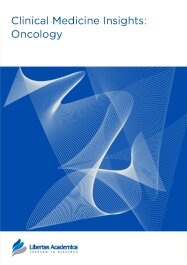

Publication Date: 25 Sep 2013
Type: Original Research
Journal: Clinical Medicine Insights: Oncology
Citation: Clinical Medicine Insights: Oncology 2013:7 247-255
doi: 10.4137/CMO.S12811

Objective: Both PCR and Hybrid Capture II (HCII) have been used for identifying cervical dysplasia; however, comparisons on the performance between these two tests show inconsistent results. We evaluated the performance of HCII and PCR MY09/11 in both screening and diagnostic populations in sub-sample of 1,675 non-pregnant women from a cohort in three clinical centers in the United States and Canada.
Methods: Sensitivity, specificity, positive predictive value, negative predictive value, and concordance between the two tests were calculated.
Results: Specificity of HCII in detecting low-grade squamous intraepithelial lesion (LSIL) was higher in the screening group (88.7%; 95% CI: 86.2%–90.8%) compared to the diagnostic group (46.3%; 95% CI: 42.1%–50.6%); however, specificity of PCR was low in both the screening (32.8%; 95% CI: 29.6%–36.2%) and diagnostic (14.4%; 95% CI: 11.6%–17.6%) groups. There was comparable sensitivity by both tests in both groups to detect high-grade squamous intraepithelial lesion (HSIL); however, HCII was more specific (89.1%; 95% CI: 86.8%–91.0%; 66.2%; 95% CI: 62.0%–70.1%) than PCR (33.3%; 95% CI: 30.2%–36.5%; 17.9%; 95% CI: 14.8%–21.6%) in the screening and diagnostic groups, respectively. Overall agreement for HPV positivity was approximately 50% between HCII and PCR MY09/11; with more positive results coming from the PCR MY09/11.
Conclusion: In the current study, PCR MY09/11 was more sensitive but less specific than HCII in detecting LSIL, and HCII was more sensitive and specific in detecting HSIL than PCR in both screening and diagnostic groups.
PDF (551.91 KB PDF FORMAT)
RIS citation (ENDNOTE, REFERENCE MANAGER, PROCITE, REFWORKS)
BibTex citation (BIBDESK, LATEX)
XML
PMC HTML


My experience publishing in 'Clinical Medicine Insights: Oncology' was excellent. I was impressed with the quick review and proof-read processes. The electronic submission website is user friendly, and the continuous manuscript status updates received from the journal were helpful in tracking the progress of the paper.
Facebook Google+ Twitter
Pinterest Tumblr YouTube